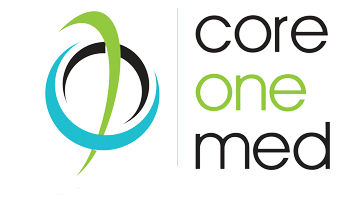Your Billing, Made Simple
Our goal is to take the confusion out of medical billing. We find the problems, show you how to fix them, and help your practice run better.
Medical Billing & Coding Audit Services
You work hard to give your patients quality care. That should be the focus of your day. But are you getting paid what you deserve for that hard work? Errors in medical billing can cause lost revenue and denied claims. These issues often create big problems for a healthcare practice. A medical coding audit company provides a necessary service to prevent this.
What is a Medical Billing Audit, Anyway?
Think of an audit as a simple checkup for your billing process. It is a way to make sure your claims and coding are correct. Our certified billing auditors inspect your patient charts and records. They confirm that your billing codes match the care you provided. Audits are important because they find things like improper coding or missed charges. This helps you fix mistakes before they lead to denied claims or penalties. Regular audits protect your income and financial health.
At Core One Med, we give your billing a complete review. We look over your documentation and coding choices to find inaccuracies. Our work helps your facility achieve error-free coding and capture all your earnings. Don’t leave your practice at risk. Find out how we can help you meet billing compliance.
Call us at 949-507-3011 for a free consultation.
Our Audit Solutions
A billing audit with us is more than just a surface level check. We look deep into your financial processes to give you a clear picture of your practice’s health. Our experienced auditors review your provider’s billing codes for accuracy and compliance. This process helps us find opportunities to improve your billing cycle. Here is how we help.
Medical Coding Audit
We perform coding audits for all types of medical records. This includes inpatient, outpatient, and home health services.
Medical Billing Audit
We review all your claims. We audit for Medicare, Medicaid, commercial, and self-pay claims to find any issues.
Collection Aging Audit
We can improve your cash flow. We do this by checking your aged claims for errors and then refiling the denied ones.
Medicare Patient Charts
We audit your Medicare patient charts. This makes sure every dollar billed is correct so your practice is paid what it is owed.
Your Billing Problems and Our Fixes
Incorrect billing and coding can cost your practice money. Denied claims lead to lost income, and backlogs create cash crunches. Our audit service finds what is broken in your workflow. After a careful analysis of your people and processes, we give you specific advice to improve your revenue cycle.
Coding errors often cause claim denials, underpayments, and patient dissatisfaction. We use advanced analysis to check medical records and find coding mistakes. This helps you get proper payment and reduces future claim denials. We also help you meet billing compliance, which lets you avoid government scrutiny.
Protect your practice from costly penalties. Call 949-507-3011 for a risk assessment to make sure your billing is compliant.
Get Clear Reports Delivered to Your Inbox
After our review, we provide you with reports that give you a complete picture of your billing operations. We make these reports easy to understand and use. They show you exactly how your practice can improve.
Charge Capture Analysis Report
This report finds areas of revenue leakage in your system. We look at issues that cause missed charges and lost income. Then we give you specific advice to improve how you capture charges.

Coding Audit Report
Our audit examines a sample of your charts to show you coding errors and ways to get better. The report details your coding accuracy rates and the financial effect of any errors found.
Denials Analysis Report
By looking at your denials, we find the main reasons your claims are rejected. Our report gives you the information needed to reduce denials and better your revenue cycle performance.
Compliance Risk Assessment Report
We check your compliance risk in areas like billing documentation and HIPAA. You get a scorecard that shows your risk exposure and a roadmap to make your compliance program stronger.
Ready to Stop Missing Out on Money?
Correcting your billing processes helps you recover lost revenue and prevent future losses. It also gives you confidence in your financial operations. This allows you to put your focus back on what matters most: providing excellent care to your patients. You can feel sure that every dollar billed is justified, compliant, and fair.
It is time to get paid correctly for your hard work. Let’s talk about how our auditing solutions can help your practice. Call Core One Med today at 949-507-3011 to claim your free audit and consultation.
People Also Ask
What is the medical billing audit process?
A medical billing audit is a checkup of a provider’s billing claims and coding documentation. The process involves certified auditors who inspect patient charts and billing records. They work to guarantee that the correct codes are used for the care provided. The audit process reveals problems like improper coding, incomplete documentation, missed charges, and noncompliance. The goal is to fix errors before they lead to denied claims or penalties.
What are the 7 steps in the audit process?
The audit process follows a structured path to ensure a thorough review. While the exact terms can vary, the seven common steps are:
- Planning: First, the auditor figures out the goal and scope of the review.
- Notification: You get a heads-up that an audit is scheduled.
- Kicking Things Off: Everyone meets to discuss the audit’s purpose and timeline.
- Getting the Details: Auditors gather information by talking to people and reviewing records.
- Writing the Draft: The auditor outlines any findings and suggests improvements.
- Getting Your Feedback: Your team reviews the draft and plans how to fix any issues.
- The Final Report: The official report is issued, and the auditor checks back later to see how things are going.
What is a billing checklist?
A billing checklist is a tool used to track the tasks needed for accurate billing. It guides a user through each step of the billing process to lower the risk of errors or delays. A checklist helps make sure that all necessary information, like client details and service dates, is collected correctly before an invoice is sent.
What are the 3 types of internal audits?
Internal audits help answer three basic questions about a business:
- Are we following the rules? (Compliance Audits)
- Could we be doing this better? (Operational Audits)
- Are the numbers right? (Financial Audits)
What are the 5 C's of audit?
To make sense of their findings, auditors use a simple formula called the 5 C’s. It helps them build a clear and complete case for every issue they find.
- Criteria: What’s the rule that should have been followed?
- Condition: What actually happened?
- Cause: Why did it happen?
- Consequence: What’s the risk or fallout from the issue?
- Corrective Action: What’s the plan to fix it?
What is the audit cycle?
The audit cycle is the complete process an auditor uses to review a company’s information. It is often seen as a continuous loop because the results of one audit help in planning for the next one. The cycle includes four main stages: planning, fieldwork (conducting the audit), reporting, and follow-up. This structured process helps auditors gather enough evidence to form an opinion and ensure a company’s records are accurate.
What is the limit of audit?
What is the billing process in accounting?
The documents do not define the general billing process in accounting. They do describe the medical billing process, which has many steps and is not limited to back-room functions. The process begins almost as soon as a patient enters a facility and can include patient intake procedures, recordkeeping, and employee training.









